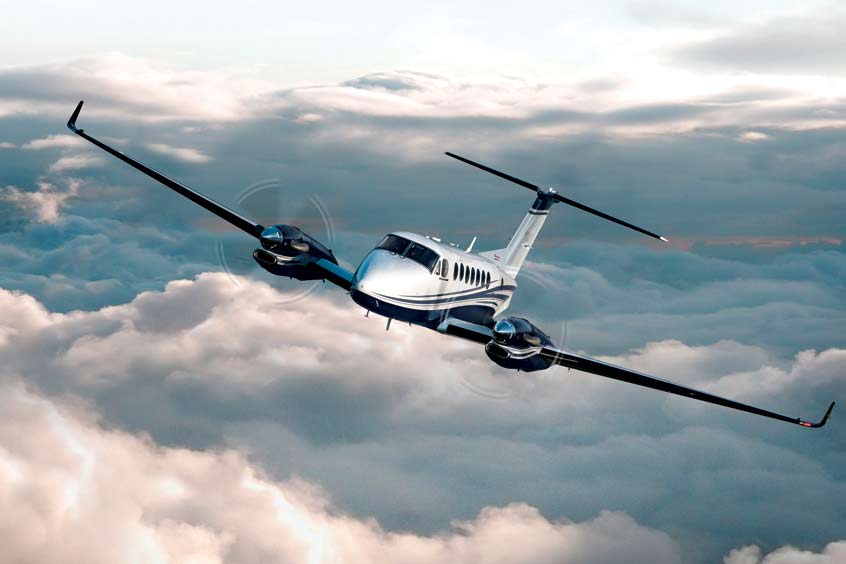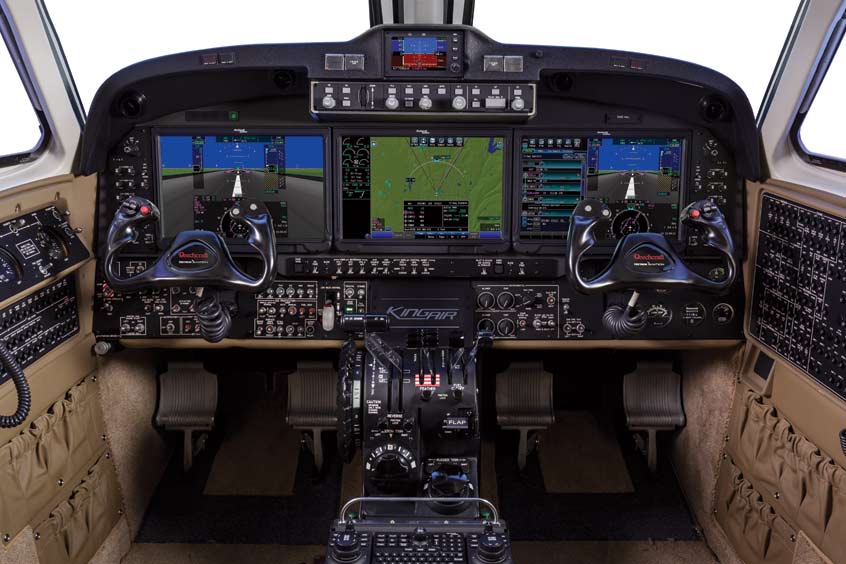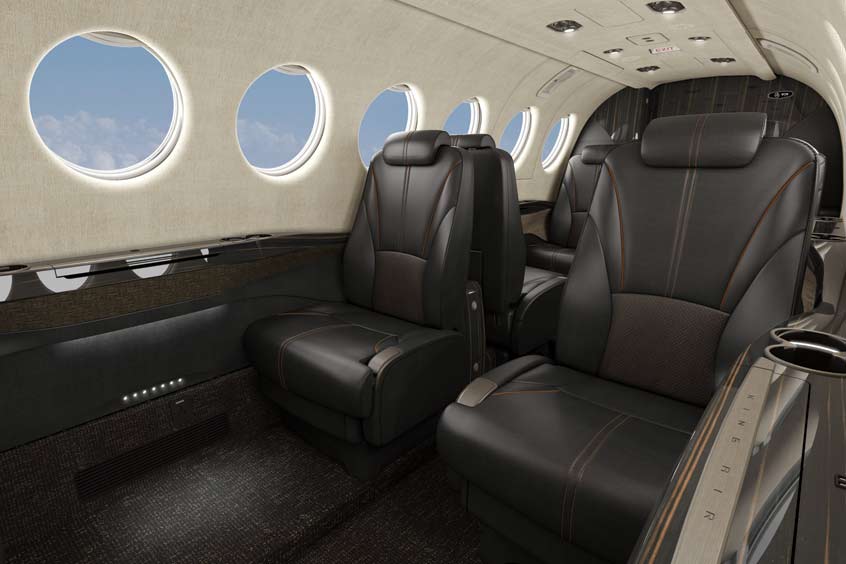ACE 2026 - The home of global charter.
 The bimonthly news publication for aviation professionals.
The bimonthly news publication for aviation professionals.




Textron Aviation is ushering in the next generation of its King Air turboprop family by introducing the Beechcraft King Air 360/360ER. The updated flagship turboprop offers the latest technological advancements in the cockpit, a redesigned cabin, and enhancements to passenger comfort. The aircraft is currently in production with customer deliveries expected to begin in the autumn.
The King Air 360/360ER is designed and manufactured by Textron. “The Beechcraft King Air 360 builds on decades of renowned versatility and reliability in the King Air family, and this upgrade further elevates it with the aircraft's superior features and engineering advancements designed to create an enhanced flying experience for passengers and crew alike,” says Ron Draper, president and CEO. “The aircraft is a result of our extensive conversations with our turboprop customers worldwide as we continually increase innovation and next-generation capability to help them achieve their varied missions with greater comfort, technology and ease.”
A key feature of the King Air 360 cockpit is the addition of the Innovative Solutions & Support (IS&S) ThrustSense Autothrottle. The autothrottle supports pilots by automatically managing engine power from the takeoff roll through the climb, cruise, descent, go-around and landing phases of flight. This enhancement reduces workload and supports pilots in their vigilance to prevent over-speed or under-speed, over-temp and over-torque conditions.
Another important update in the cockpit is the new digital pressurisation controller, which automatically schedules cabin pressurisation during both climb and descent, reducing pilot workload and increasing overall passenger comfort. The pressurisation gauges have been integrated with the Collins Aerospace Pro Line Fusion flight deck.
With seating for up to nine passengers, the latest King Air offers has been designed to offer a greater passenger experience than its predecessor. The aircraft features a cabin altitude of 5,960 ft at a typical cruising altitude of 27,000 ft – more than 10 per cent lower when compared to the King Air 350i. The improved cabin altitude levels provide greater comfort for passengers, especially during longer flights.
A redesigned bespoke cabin features custom-built cabinetry, partitions and side ledges, upgraded materials and finishes, along with all new interior schemes. Other amenities that come standard on the entire King Air lineup include pull-out work tables, standard power outlets, USB charging stations and a private aft lavatory.
“We created an environment that provides passengers with a greater sense of openness inside the King Air,” says Christi Tannahill, senior VP of customer experience. “The cabin experience is such a critical element when choosing an aircraft, and it was important for us to surpass customer expectations. Their journey will not only be comfortable, but also a relaxing, enjoyable experience. The Beechcraft King Air 360 offers many of the amenities that our customers desire.”
Nearly 7,600 King Air turboprops have been delivered to customers around the world since 1964, making it the best-selling business turboprop family in the world. The worldwide fleet has surpassed 62 million flight hours in its 56 years, serving roles in all branches of the US military and flying both commercial and special mission roles around the world.
Textron has also received STC approval for Innovative Solutions & Support's (IS&S) ThrustSense Autothrottle on the Beechcraft King Air 300 series equipped with Pro Line Fusion avionics, as well as on the new 360s. This comes in addition to the STC that was received in 2019 for Pro Line 21-equipped Beechcraft King Air 200 series.
The autothrottle supports pilots in their critical mission of delivering people or goods safely, by automatically managing engine power from the takeoff roll through the climb, cruise, descent, go-around and landing phases of flight. This enhancement reduces pilot workload and supports them in their continuous vigilance to prevent over-speed or under-speed, over-temp and over-torque conditions.
“Thousands of pilots take to the skies daily for a wide range of missions in their Beechcraft King Air turboprops,” says Brian Rohloff, senior VP of customer support. “We're committed to supporting our customers and operators with the latest technology and avionics upgrade options that offer them maximum support and efficiency.”
Control of the ThrustSense Autothrottle is housed in an easy-to-install flight instrument that provides standby functionality on a high-resolution display. This optimised retrofit design allows installation without any structural modifications to the existing throttle quadrant, enabling seamless implementation and intuitive pilot control.